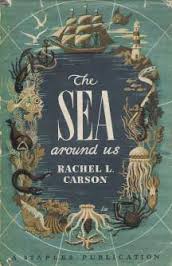When I think of the floor of the deep sea, the single, overwhelming fact that possesses my imagination is the accumulation of sediments. I always see the steady, unremitting, downward drift of materials from above, flake upon flake, layer upon layer — a drift that has continued for hundreds of millions of yeas, that will go on as long as there are seas and continents….the most stupendous ‘snowfall’ the earth has ever seen (75).
Edouard Glissant in 1990 (trans. 1997)
We no longer reveal totality within ourselves by lightning flashes. We approach it through the accumulation of sediments. The poetics of duration (another leitmotif), one of the first principles of the sacred, founding books of community, reappears to take up the relay from the poetics of the moment. Lightning flashes are the shivers of one who desires or dreams of a totality that is impossible or yet to come; duration urges on those who attempt to live this totality, when dawn shows through the linked histories of peoples. (33)
They use the same phrase: “the accumulation of sediments.”
A female American scientist and a male poet from Martinique. Her book a bestseller in English in 1951, his globally transmitted in French in the 1990s. Physics and poetics.
Carson calls this accumulation “epic poem of the earth” (76). Glissant calls it “creolization” (34) and “limitless metissage” (34).
Sediments are real things, rocks and silica and “billions of billions of tiny shells and skeletons, the limy or silicious remains of all the minute creatures that once lives in the upper waters” (76). Sediments are also stories “that explode the scattered lands into an arc” (33).
 This is the key point: all physical and scientific accumulations have a poetics. And all poetic and narrative forms reach toward physical things.
This is the key point: all physical and scientific accumulations have a poetics. And all poetic and narrative forms reach toward physical things.
The task is to think them together, the lyrical scientist and analytical poet. In the disorienting swirl of the global ecology we swim with both.


That pretty much sums up the argument of my stone book 🙂
I really love this post, and wish I had had it to hand during MLA, when the power of matter to do anything that involves language was questioned at a panel I participated in. The other person talked about how physics is all and only math, but I insisted that metaphors are themselves material (and material conveyance). This is great stuff, and a reminder of why I love estuaries so much.
Glad you like it, Jeffrey! I feel like the Carson / Glissant overlap also sums up the argument of my shipwreck book, which I hope won’t simply be a watery recirculatiion of Stories of Stone. It might be that this post also advances the metaphor / materiality argument I’ve got in the back of my mind (always!) for the Elemental Eco essay.
Fascinating post, Steve!
Another really powerful meditation on temporal accumulation also concerns the sea: Ian Baucom’s _Specters of the Atlantic_, especially his reading of M. NourbeSe Philip’s poetic reflection on the Zong massacre.
Thanks, Tobias! I know Baucom’s excellent book, and also a modern novel about the Zong the title of which I can’t remember now. Starts with a play on Walcott: “the sea is slavery.”
What this post is making me think about is the way the Earth’s three primary material domains–the lithosphere, the atmosphere, the hydrosphere–each are subject to different principles of accumulation. Each is a different sort of archive; in each, material causality manifests in distinct temporal scales. I keep writing, polemically, “air is the matter of history,” and then being reminded of the significance of the oceans in maintaining the Earth’s relatively stable climate.
Which means, perhaps, that these three accumulations, water, air, earth, plus the differently-structured element of fire, each present us with a different historical “matter”? The matters of water, of air, of earth — like the matters of Britain, Troy, France in medieval epic they overlap & exchange materials but also represent different temporalities & political assemblages. Air is history, but “sea is history” too (sez Walcott).
I look forward to reading more of your air-y material — and I’m sorry to have missed you in Chicago!
Btw the novel is Fred D’Aguiar’s *Feeding the Ghosts* (1997)